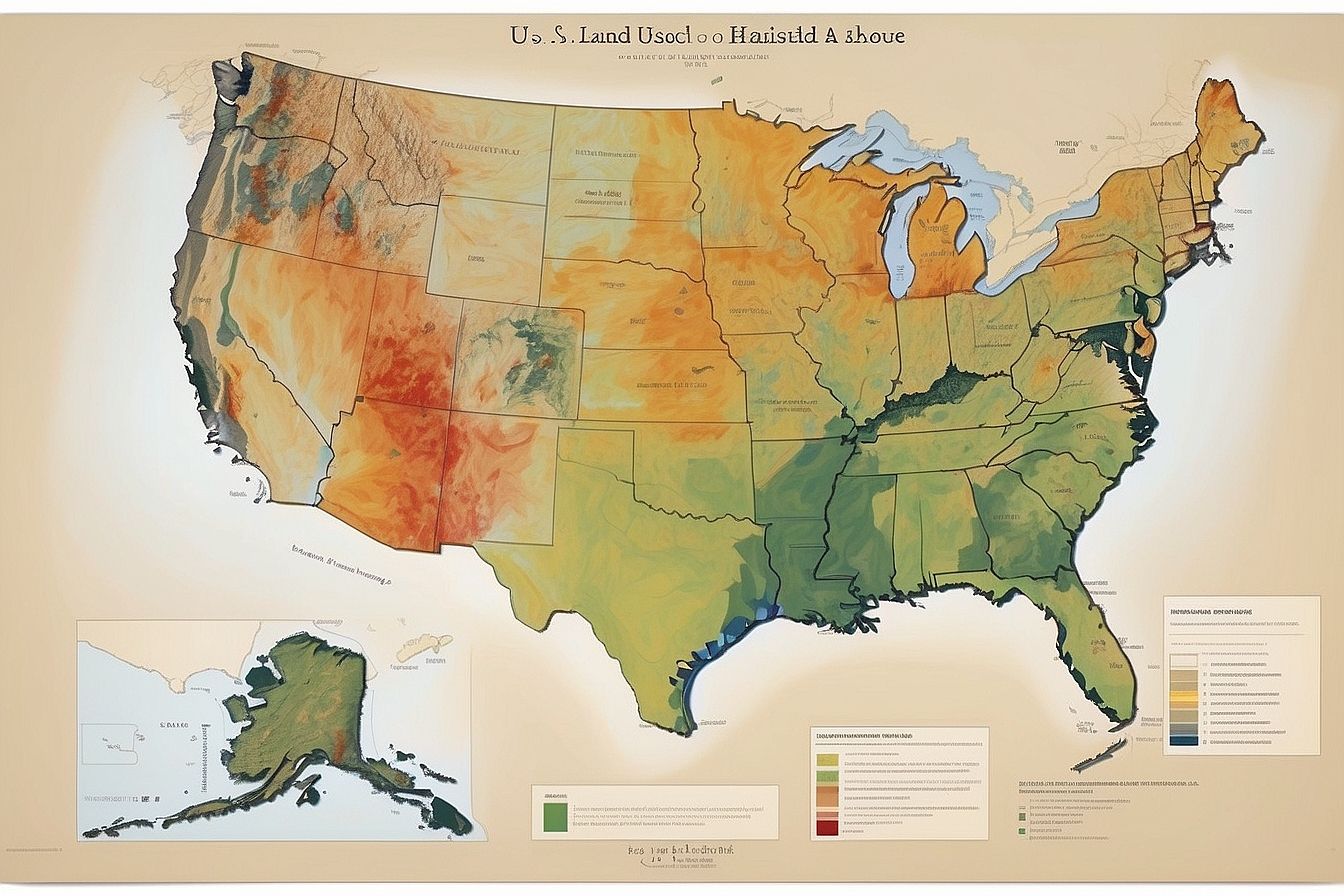 Natural disasters can be merciless, leaving behind a trail of ruin and upheaval that communities must contend with. It’s something we understand all too well; every year, for example, over 29 million acres of land across the globe bear the scars of these calamities.
Natural disasters can be merciless, leaving behind a trail of ruin and upheaval that communities must contend with. It’s something we understand all too well; every year, for example, over 29 million acres of land across the globe bear the scars of these calamities.
Our blog delves into meaningful strategies and approaches to mend our wounded earth, nurturing it back from the harsh clutches of devastation. As you read through our posts, immerse yourself in the knowledge that despite everything, there remains steadfast hope for restoration and renewal.
Key Takeaways
- Sustainable and ecosystem – based approaches are vital for land restoration after natural disasters, using native plants and respecting local environmental conditions to aid in recovery.
- Smart technologies such as GIS, UAVs, and remote sensing play a key role in assessing damage, monitoring progress, and implementing targeted restoration interventions effectively.
- Community involvement is essential; local participation can drive reforestation projects, habitat clean-ups, and conservation educational programs that promote environmental stewardship.
- Innovative techniques like hydroseed technology for erosion control and the creation of artificial coral reefs enhance ecosystems’ resilience to future calamities while supporting biodiversity.
- The benefits of restoring lands include reducing landslide risks, regulating water flows to mitigate floods, sequestering carbon to combat climate change effects, and revitalising wildlife habitats.
Strategies for Restoring Lands after Natural Disasters
After a natural disaster, it is crucial to consider sustainable and ecosystem-based approaches for restoring lands. Incorporating smart technologies and nature-based solutions can also play a significant role in the restoration process.
Sustainable approaches
We focus on sustainable approaches to restore lands affected by natural disasters. These methods ensure that we rebuild ecosystems while maintaining their ability to regenerate naturally.
By adopting practices like recycling debris from damaged areas, we turn waste into resources for rehabilitation and reconstruction processes.
Our aim is to promote ecological restoration that harmonises with local environmental conditions. We encourage the use of native plants in reforestation efforts as they are better adapted to local climates and support biodiversity conservation.
We integrate land administration techniques that balance land ownership rights with the need for ecosystem conservation, ensuring a recovery beneficial to both humans and nature.
Ecosystem-based approaches
Ecosystem-based approaches involve restoring natural environments by working with existing ecosystems, rather than trying to replace or rebuild them. This method focuses on allowing nature to heal and regenerate itself, harnessing the inherent resilience of ecosystems.
By understanding the interconnections within an ecosystem and encouraging their recovery, we can ensure that the restored areas are more sustainable and better able to withstand future natural disasters.
Ecosystem-based approaches also prioritise protecting biodiversity, fostering healthy habitats for numerous species, and maintaining the ecological balance necessary for a thriving environment.
Implementing ecosystem-based approaches requires careful planning and collaboration with local communities to ensure that restoration efforts align with their needs and priorities.
Incorporation of smart technologies
Moving from ecosystem-based approaches, the incorporation of smart technologies plays a pivotal role in restoring lands after natural disasters. Utilising advanced tools such as remote sensing, Geographic Information Systems (GIS), and Unmanned Aerial Vehicles (UAVs) enables us to assess the impact of natural disasters on landscapes accurately.
These technologies help in mapping the extent of damage, identifying areas for restoration, and monitoring progress closely. By harnessing these innovative solutions, we can make informed decisions and implement targeted interventions that efficiently contribute to land rehabilitation and environmental recovery.
Smart technologies also facilitate real-time data collection, enabling better resource management and adaptive planning. This approach ensures that our efforts are maximised by focusing on high-priority areas needing urgent attention.
Nature-based solutions
Nature-based solutions involve using natural processes and ecosystems to restore and protect the environment after natural disasters. This can include activities such as reforestation, wetland restoration, and creating artificial coral reefs to revitalise damaged habitats.
These solutions not only help in controlling erosion but also play a crucial role in regulating water flows and sequestering carbon. Engaging with these nature-based approaches facilitates the regeneration of landscapes, contributing to disaster recovery efforts.
Moving forward, let’s explore the various techniques for restoring lands and ecosystems after natural disasters.
Community engagement and participation
Communities play a vital role in the restoration of lands after natural disasters. Active involvement in reforestation initiatives, wetland restoration efforts, and other conservation projects is crucial for promoting ecosystem regeneration.
By organising tree-planting events, habitat clean-ups, and educational workshops on sustainable land use, we can inspire local residents to take ownership of environmental stewardship.
Engaging with community members fosters a sense of responsibility towards nature. Collaborating with local organisations and schools provides opportunities for hands-on participation in soil reclamation projects and urban forest restoration.
Techniques for Restoring Lands and Ecosystems
Reforestation using drone technology and wetland restoration through bioengineering are just a few of the innovative techniques being used to restore lands and ecosystems after natural disasters.
These advanced methods are helping to revitalise damaged habitats and support the recovery of wildlife populations.
Reforestation using drone technology
To restore areas affected by natural disasters, we use drone technology for reforestation. Drones are equipped to plant seeds in hard-to-reach and inaccessible terrain, promoting a faster and more efficient reforestation process.
- Drones are programmed to carry and disperse seed pods across large areas, ensuring comprehensive coverage for optimal forest regeneration.
- The use of drones reduces the need for manual intervention, decreasing the risk of injury to workers while increasing overall productivity.
- This innovative approach allows for precise seed placement, enhancing the success rate of tree growth and establishing resilient forests.
Wetland restoration using bioengineering
After reforestation has helped in replenishing forest cover, wetland restoration using bioengineering can further enhance the recovery of ecosystems. This approach involves the use of biological and ecological principles to restore and maintain the functions and services of wetlands. Several techniques can be employed:
- Biodegradable materials such as coconut fibre logs and native plants are used to stabilise shorelines and prevent erosion.
- Constructed wetlands are created using natural systems such as soil, plants, and microorganisms to treat stormwater or wastewater.
- Employing green infrastructure techniques like rain gardens, swales, and permeable pavements for water filtration.
Hydroseed technology for erosion control
After exploring wetland restoration using bioengineering, it’s important to also consider hydroseed technology for erosion control. This technique involves the application of a mixture of seeds, mulch, and other materials through a hose onto the ground to prevent soil erosion and promote vegetation growth in areas affected by natural disasters.
- Hydroseed technology involves spraying a slurry of seed and mulch onto the soil surface, creating an environment conducive to seed germination and plant growth.
- The mulch in the slurry helps to retain moisture, protecting seeds from harsh environmental conditions and aiding in their successful establishment.
- This method is highly effective on sloped terrain or areas with poor soil quality, where traditional seeding methods may not produce favourable results.
- Hydroseeding can be tailored to specific site requirements by adjusting the composition of the slurry to suit different ecological needs and land conditions.
- By promoting vegetation growth and preventing soil erosion, hydroseed technology plays a crucial role in restoring habitats and stabilising landscapes in the aftermath of natural disasters.
- The use of native plant species in hydroseeding further contributes to ecosystem renewal and supports biodiversity conservation efforts following environmental disturbances.
- Implementation of this environmentally friendly approach aids in natural resource conservation while facilitating the recovery of habitats and ecosystems impacted by natural disasters.
Artificial coral reefs
After discussing hydroseed technology for erosion control, another effective technique for restoring lands and ecosystems is the creation of artificial coral reefs. These reefs are strategically placed in areas where natural coral has been damaged or destroyed due to natural disasters. By stimulating new growth and providing habitat for marine life, artificial coral reefs offer several benefits:
- Artificial coral reefs provide a substrate for new coral larvae to attach and grow, helping to restore damaged reef systems.
- These reefs contribute to biodiversity by providing shelter and food sources for various marine species.
- They support local fishing industries by creating new habitats for fish and other commercially valuable species.
- Artificial coral reefs also offer opportunities for eco – tourism, attracting visitors who can appreciate the beauty of these underwater ecosystems.
Benefits of Restoring Lands after Natural Disasters
By restoring lands after natural disasters, we can reduce the risk of landslides and soil erosion, regulate water flows, sequester carbon, and revitalise wildlife habitats. Interested in learning more about the strategies and techniques for land restoration? Keep reading to discover how innovative approaches are making a positive impact on our environment.
Reduced risk of landslides and soil erosion
Restoring natural habitats and ecosystems significantly decreases the likelihood of landslides and soil erosion. Through reafforestation, wetland restoration, and other techniques, we help stabilise the land and prevent erosion.
By incorporating smart technologies and nature-based solutions, such as hydroseed technology for erosion control, we actively mitigate the risk of these disasters occurring.
Artificial coral reefs also play a crucial role in reducing the impact of soil erosion caused by storms or wave action. These efforts are vital to safeguarding our environment against future natural disaster recovery challenges while positively impacting forest health and revitalising wildlife habitats.
Regulating water flows
To complement the reduction of landslides and soil erosion, regulating water flows is another key benefit of restoring lands after natural disasters. By restoring natural watercourses and wetlands, we can help to mitigate the impacts of extreme weather events.
This includes reducing flood risk by reinstating floodplains and establishing natural barriers that slow down and absorb excess water. Additionally, these restored ecosystems also act as a form of stormwater management, improving resilience in the face of future climate challenges.
Restoring lands for regulating water flows not only benefits local communities but also supports wider environmental conservation efforts – it’s a win-win situation for both people and nature.
Sequestering carbon
Restoring lands after natural disasters is essential for sequestering carbon and mitigating the impacts of climate change. By regenerating forests, wetlands, and other ecosystems, we can enhance the ability of these natural environments to capture and store carbon dioxide from the atmosphere.
This process helps to reduce greenhouse gas emissions and combat global warming effectively. Additionally, as part of our commitment to environmental remediation, actively engaging in reforestation efforts assists in bolstering biodiversity while contributing positively towards creating a healthier planet for future generations.
Employing nature-based solutions like reforestation allows us to restore damaged landscapes and harness their potential for carbon storage. Embracing innovative technologies such as drone-assisted planting further accelerates this process, empowering us to make meaningful strides towards enhancing ecosystem resilience while reducing our carbon footprint.
Revitalising wildlife habitats
Revitalising wildlife habitats involves creating suitable conditions for plants, animals, and other organisms to thrive. This can be achieved by planting native vegetation, restoring water sources, and preserving a natural habitat.
By doing so, we can encourage the return of diverse wildlife species that may have been displaced or harmed during the disaster. Additionally, incorporating smart technologies and sustainable approaches into the restoration process is vital for promoting healthy ecosystems and ensuring long-term habitat recovery.
Implementing nature-based solutions such as reforestation initiatives using drone technology and constructing artificial coral reefs can significantly contribute to revitalising wildlife habitats.
Conclusion
In conclusion, restoring lands after natural disasters plays a crucial role in fostering ecological balance and community resilience. Implementing sustainable approaches and nature-based solutions aids in rejuvenating habitats and reducing the risk of erosion.
Through smart technologies, reforestation, and wetland restoration techniques, we can actively contribute to the restoration of ecosystems and safeguarding biodiversity for future generations.
With community engagement at the forefront, together we can rebuild and revitalise our environment following environmental upheaval.
FAQs
1. What is habitat restoration after a natural disaster?
Habitat restoration involves bringing back the natural plants and animals to areas that were destroyed by events like floods, fires, or storms.
2. How do we recycle debris from damaged homes?
Recycling debris means taking broken materials from homes ruined in disasters and turning them into something new and useful instead of throwing them away.
3. Why is rebuilding after a disaster important?
Rebuilding after a disaster helps people get back their homes and makes sure communities are safe and strong again.
4. Can restoring lands help prevent future damage?
Yes! Fixing up habitats can protect the land from erosion or flooding, making it better prepared for any future disasters.





